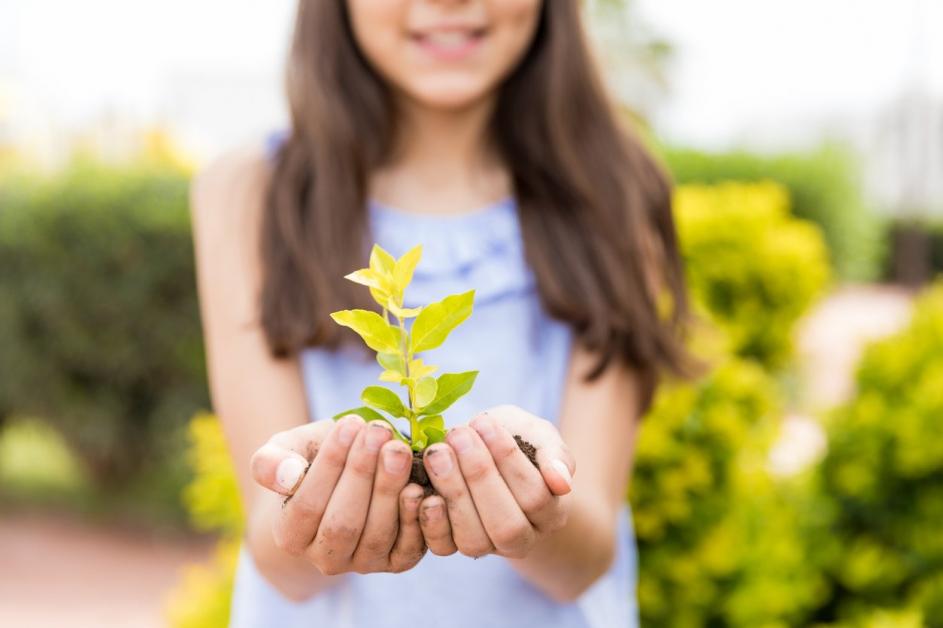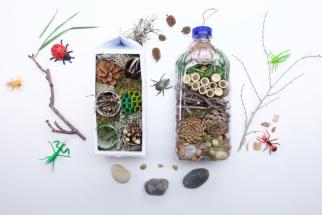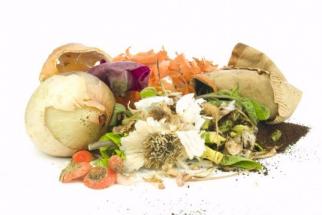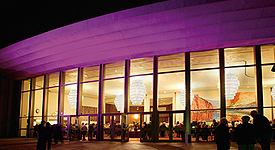
Today marks the 50th anniversary of Earth Day, and the Environmental Education Center is helping you celebrate at home with an eco-centric day filled with citizen science activities and arts and crafts to help cultivate environmental stewards for the next 50 years.
“We treat every day like Earth Day, but Earth Day 2020 is an important one to celebrate, as we’ve made great strides in protecting our natural resources and putting sustainability at the forefront,” explains Daniella Rodriguez, recreation coordinator at the EEC. "Our at-home activities expand those efforts with fresh-air fun and inspire families to explore the simple ways they can live a more sustainable life.”
Bug Hotel
Love them or hate them, bugs are part of our world and play an important role in our ecosystem. Like any creature living on our planet, we all need a place to call home. Creating a Bug Hotel for ladybugs, bees, butterflies, and more can contribute to the health of your garden. It’s also a great way to introduce your little learners to habitats, ecosystems, and more.

What you’ll need:
- A Container (any kind) to hold the “hotel rooms”
- Twigs or sticks from your garden
- Wood Scraps
- Leaves
- Small Rocks or Pebbles
- Pine Cones
- Newspaper or Scrap Paper
- Toilet Paper or Paper Towel Rolls
When constructing your bug hotel, be creative! You can use any container to hold the smaller pieces that will eventually become your bug hotel rooms. For example, use an old pot and put it on its side to fill with items. You can also use an old tissue box and cut the top off or cut a plastic bottle in half.
Depending on the size of the container you use, you can use items like toilet paper rolls to fill in your container or simply begin to stuff your container with items you’ve collected. If you’re using newspaper or scrap paper, be sure to roll them up and tape them so they don’t come undone inside your hotel.
Once you’ve constructed your bug hotel, you’ll want to place it next to a flowering bush or near plants that need to be pollinated (i.e. vegetables in your garden).
Compost Terrarium

Composting recycles materials like food scraps and yard waste that otherwise go into the trash is another great way to celebrate Earth Day. This kid-friendly soda bottle compost terrarium allows little learners to watch fruits and vegetables decompose before their eyes.
What you’ll need:
- 2-liter Bottle or see-through plastic container. You can also use an old spaghetti sauce glass jar once you wash it out.
- Soil (potting soil or gardening soil)
- Dried Leaves or Dried Grass
- Any Aging Vegetables or Fruit
- Water
- Newspaper or Cardboard from a box or egg carton
- Spray Bottle
- Scissors
Start off by asking your kids to make a list of the items that they ate. From the list, discuss with them what was natural (i.e. banana) and what was unnatural (i.e. food wrapper). Explain that natural food items like banana peels or food scraps can be recycled back into the soil and adds nutrients that plants will use to grow. Although the amount of compost we make won’t be enough for an entire garden, this activity helps to spark kids’ interest in reducing their waste at home.
To make your see-through composter, cut the top off a 2-liter soda bottle with scissors. Next, fill the bottom of your bottle or jar with a layer of soil. Then, add your layer of food scraps or “green” material. This can consist of, banana peels, apple peelings, or any vegetable that might be going bad in your fridge. We recommend that you chop or tear up the veggies into smaller pieces so they can break down faster.
Now add a layer of our dried leaves or grass, newspaper scraps, or cardboard egg carton. Lastly, spray the layers with a little water so that our terrarium is moist. Repeat these steps until the bottle is nearly or completely full. Soil greens and browns with water. Place your composter in a sunny spot, if it looks too dry be sure to spray some more water to keep it moist. Now, wait to see how long it takes for your greens and browns to decompose. You’ll know the compost is ready when it’s brown and crumbly.
Celebrate Digitally

Celebrate the 50th anniversary of Earth Day digitally on your phone by downloading and contributing to citizen science projects locally and around the world. You can go on a digital nature hike when you download the iNaturalist app on your phone. The iNaturalist app helps you identify plants and animals while also contributing to citizen science. The application is utilized by thousands of users who upload their observations from a specific location. Some of the data uploaded contributes to ongoing research projects.
Or try the Earth Day Network’s, Earth Challenge 2020 app. Users can contribute data that will be used by over 200 researchers to improve environmental concerns like air quality and plastic pollution. The app also provides you with tools on how to make a positive change in your community. Once you download the app, go explore the outdoors all while maintaining a safe distance, of course.
What you’ll need:
- Cellphone



